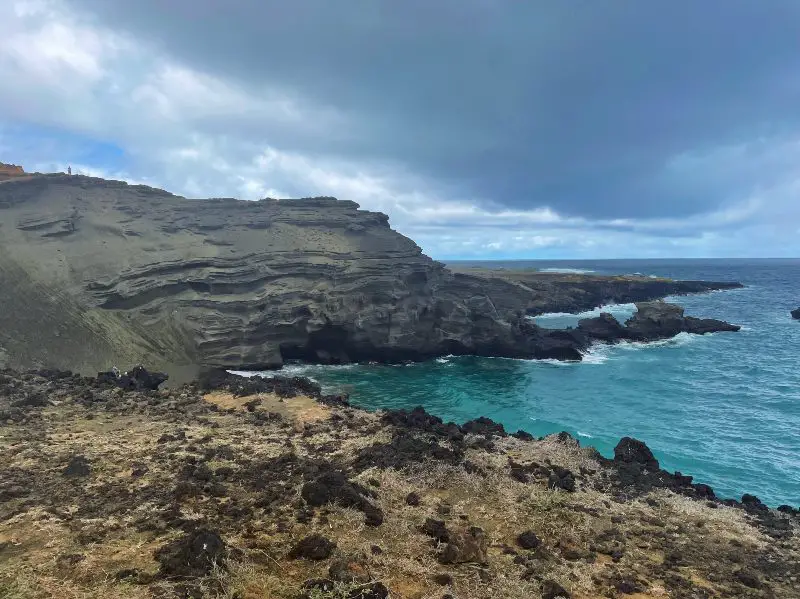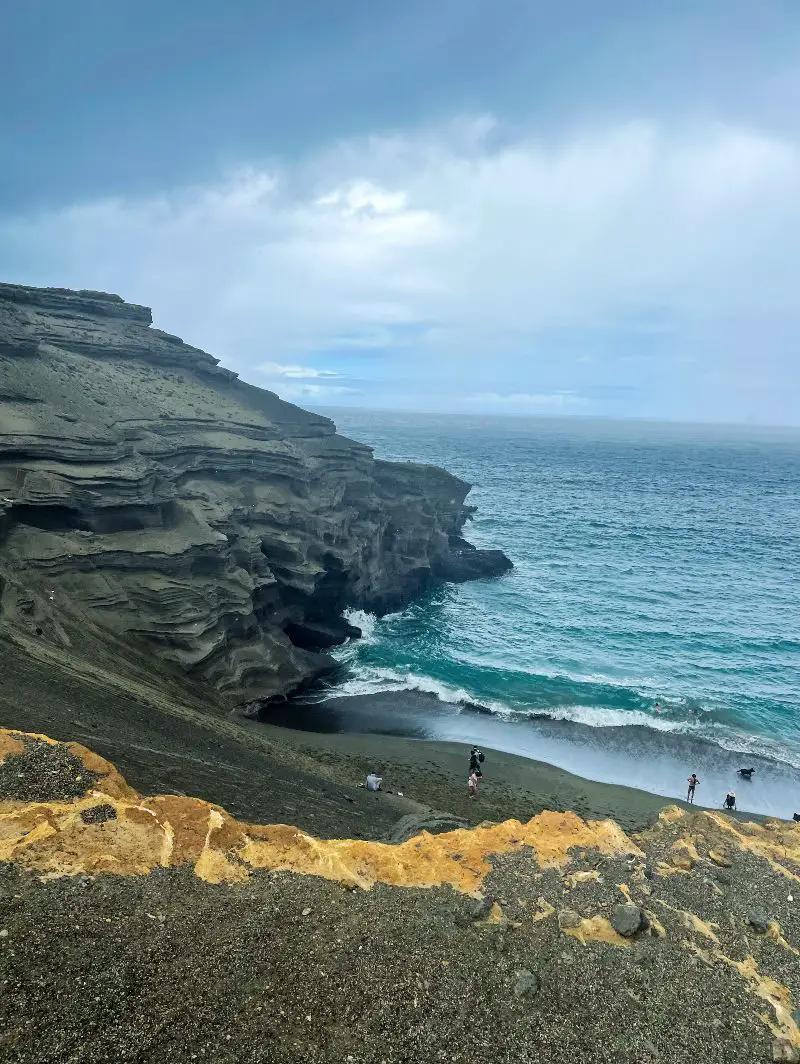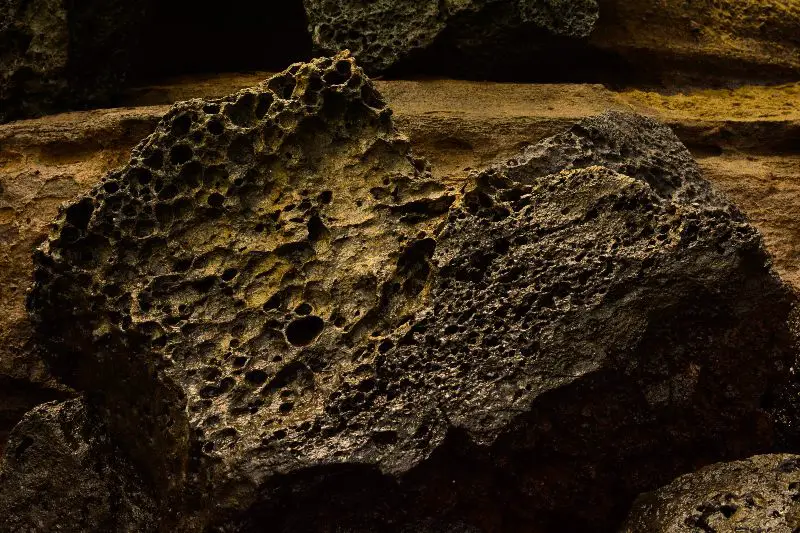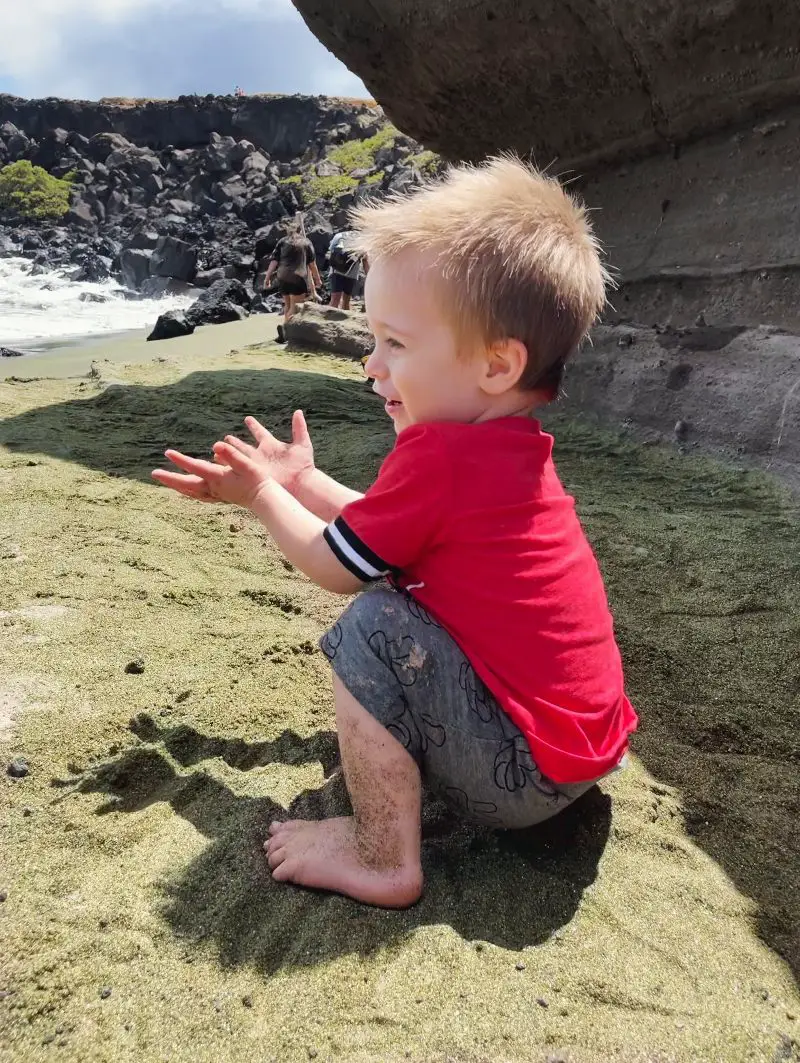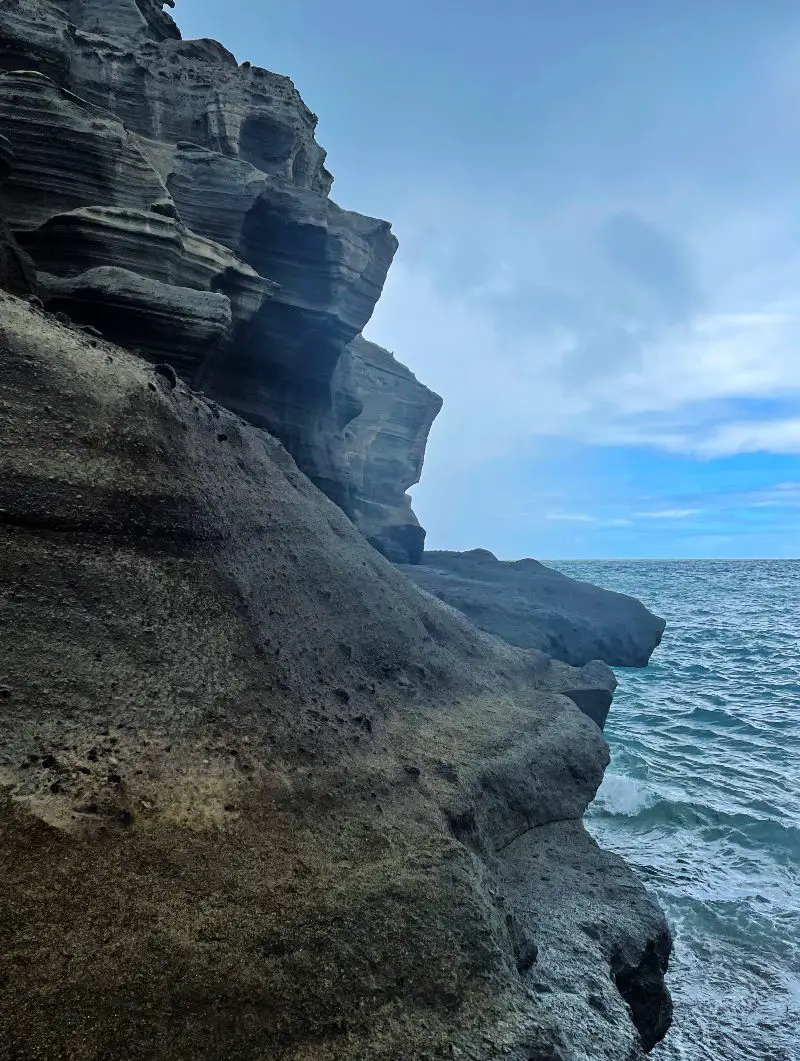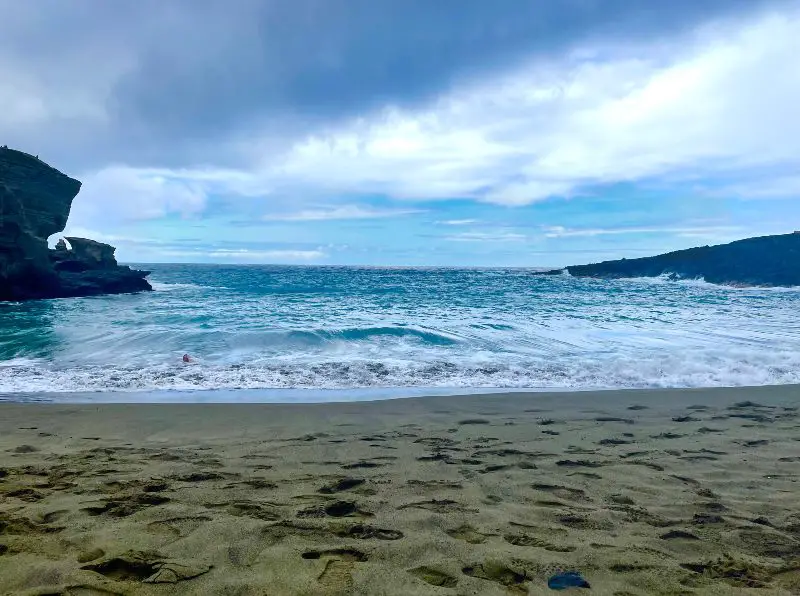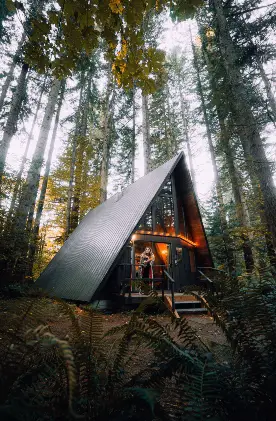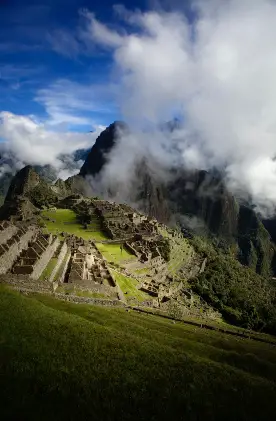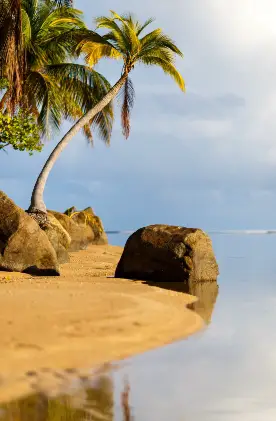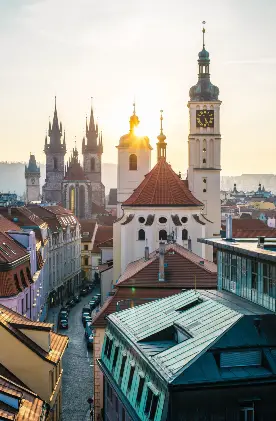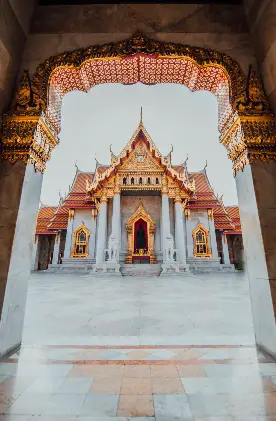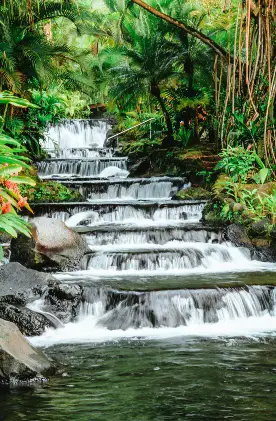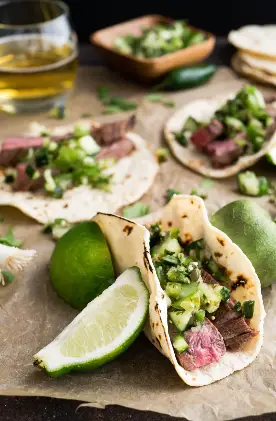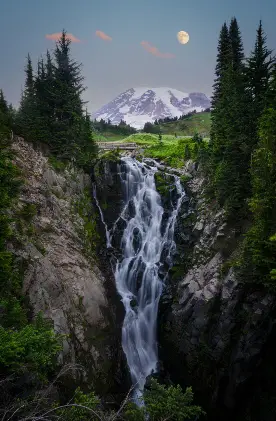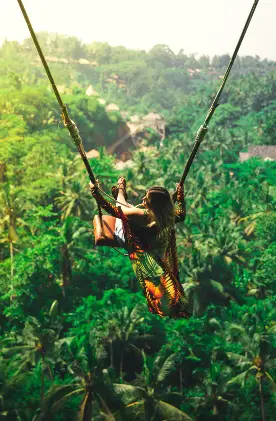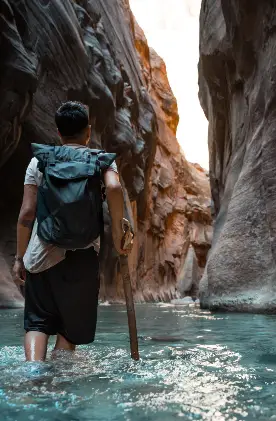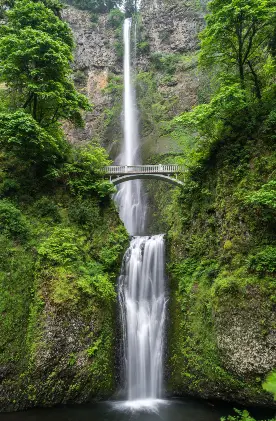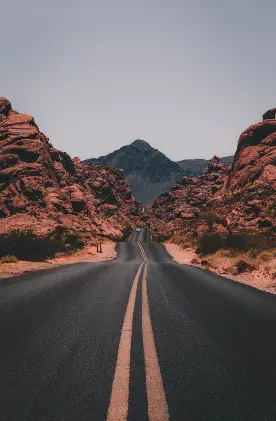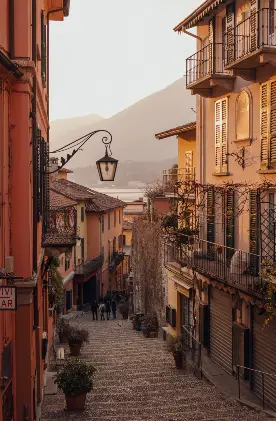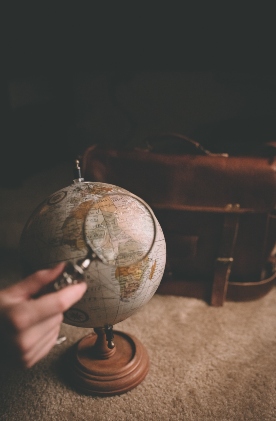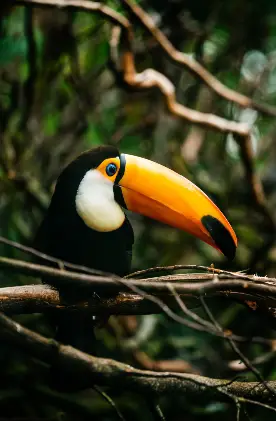“Is that it? Doesn’t look very green from here,” my husband panted, pointing out the obvious as he took in the view. We had just hiked a strenuous three miles on a hot September day in sandy, hilly terrain with a baby. Our goal: to reach one of only four green sand beaches in the world.
Secreted away near the southern tip of Hawaii’s Big Island, far from the heavily frequented touristy spots, an intimate green beach lies at the bottom of a small cliff.
Now that we’d reached the clifftop, we prepared to carefully clamber down the fifty or so vertical feet to the shore while carrying our one year old and beach gear. The precarious descension involved navigating down smooth, steep stretches of rock and maneuvering through narrow paths etched in the stone.
Getting to Papakōlea Green Sand Beach
I first learned about the island’s enchanted Papakōlea Beach in grad school when my planetary science professor raved about the beach’s mineral qualities. The shore here is covered in green-tinted olivine crystals that formed in an ancient volcanic eruption.
But despite its awe-inducing qualities, Papakōlea Beach’s isolated location keeps it off the beaten path. Those who do make the trek typically opt to pay for a ride in one of the trucks that (illegally) shuttles people to and from the beach. These shuttles aren’t an official service; in fact, they’re not part of a legally registered business.
Those who run the shuttles often bar the way for tourists to drive through on their own and may even exaggerate how far it is to hike, all to persuade visitors to pay for a ride. It’s also illegal for anyone to drive on the land between the parking area and the beach because it damages the fragile ecosystem.
We opted to walk even though we were so heavily laden with our little one and much more beach gear than we needed. We didn’t know then that the shuttles were illegal – just that they were expensive! Had we known the rugged, 2.5-mile-long labyrinthine maze of sandy trails that was in store, I’m sure we would have paid for a ride instead.
The way was paved for a short stretch, but then different well-worn dirt paths veered off in all directions and we were left to guess which one would lead us to the beach. We clung to paths along the shore, reasoning that it would lead us to the right place eventually.
At times we saw a few other scattered hikers opting for trails that veered inland. We wondered if they knew a shorter way, but decided to maintain our course just in case they were misguided or heading to some other destination.
We took turns switching between who carried our one year old, Miguel, and who carried the gear – Miguel was heavier, but the gear was more awkward to hold, especially when sloshing through thick sand. I followed behind Mitch from a safe distance to avoid inhaling all the dust his flip flops kicked up with each step.
We stopped for several water breaks along the way and slathered sunscreen on Miguel a couple times, foolishly neglecting to similarly protect ourselves from the harsh sunlight. Luckily I’d used some foundation that contained a little SPF, but my arms and legs were tinted pink for several days afterward.
After more than an hour and a half, our sweaty, uncertain journey was finally at an end – we had made it to the top of the cliff and the beach was in sight! I slowly made my way down the steep cliff face while holding Miguel, desperate to reach the beach but terrified to hurt the baby in the process.
He’s always been a mellow little soul as long as we’re holding him close in our arms; he was calm through nearly the entire journey to the cliff and down to the shore, with only a few brief fussy moments along the way.
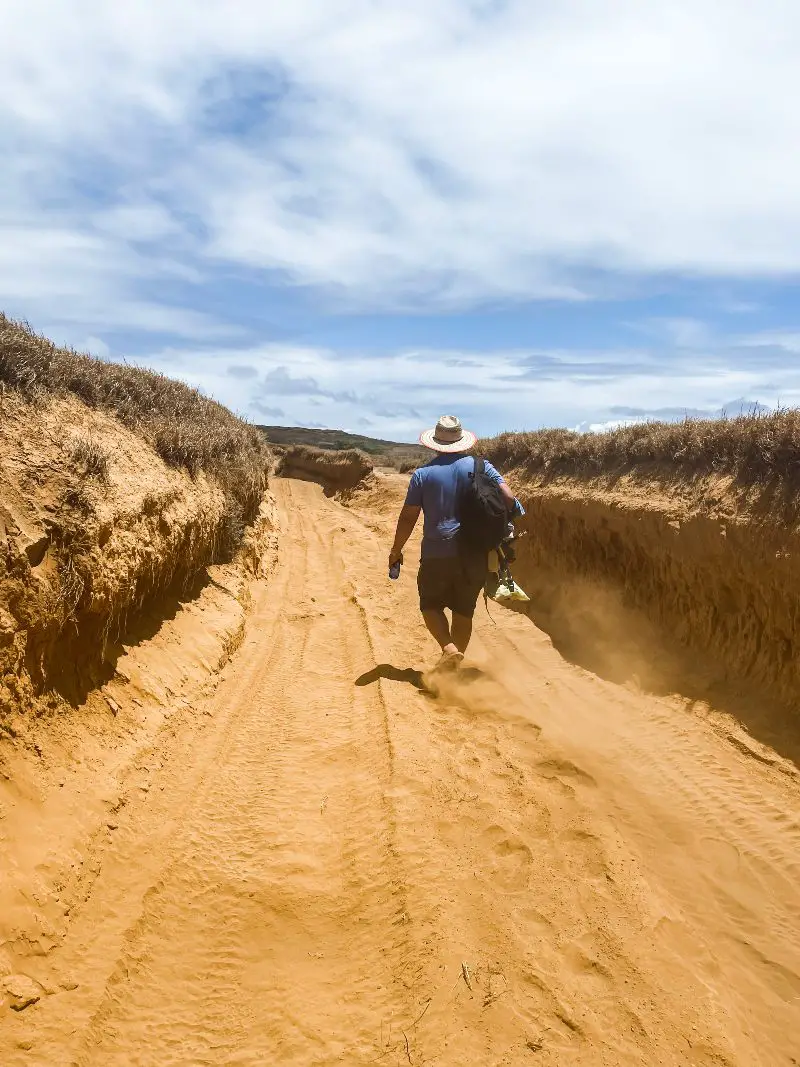
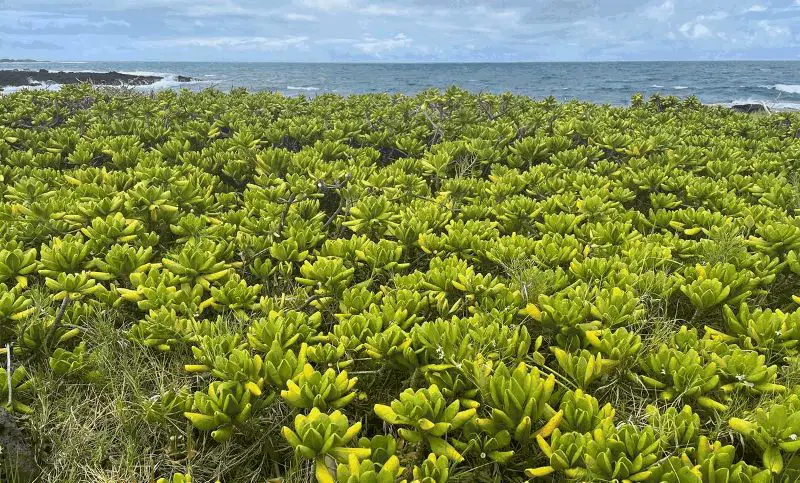
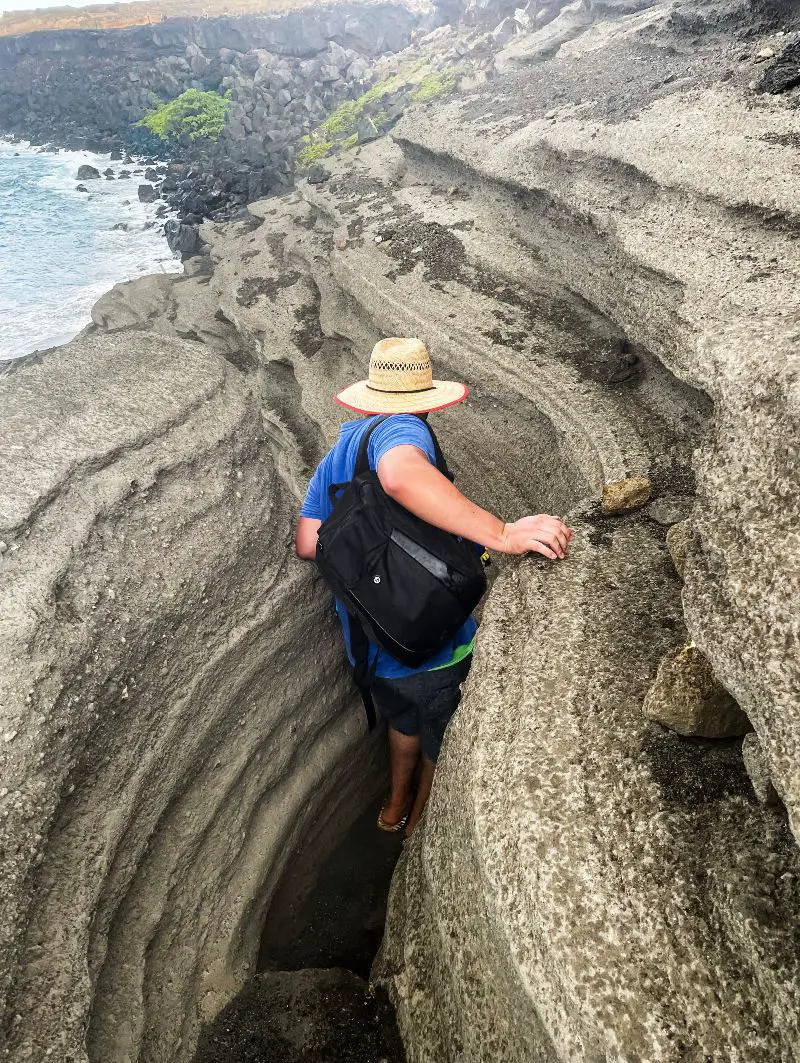
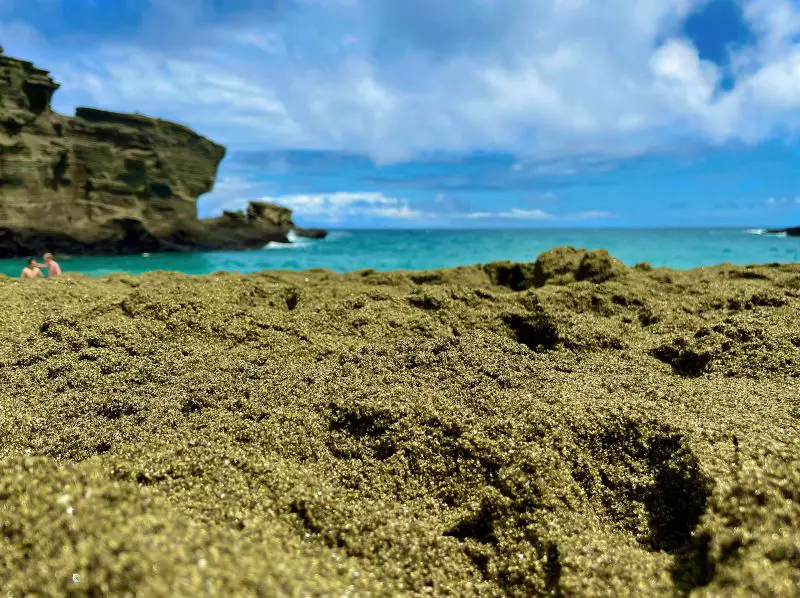
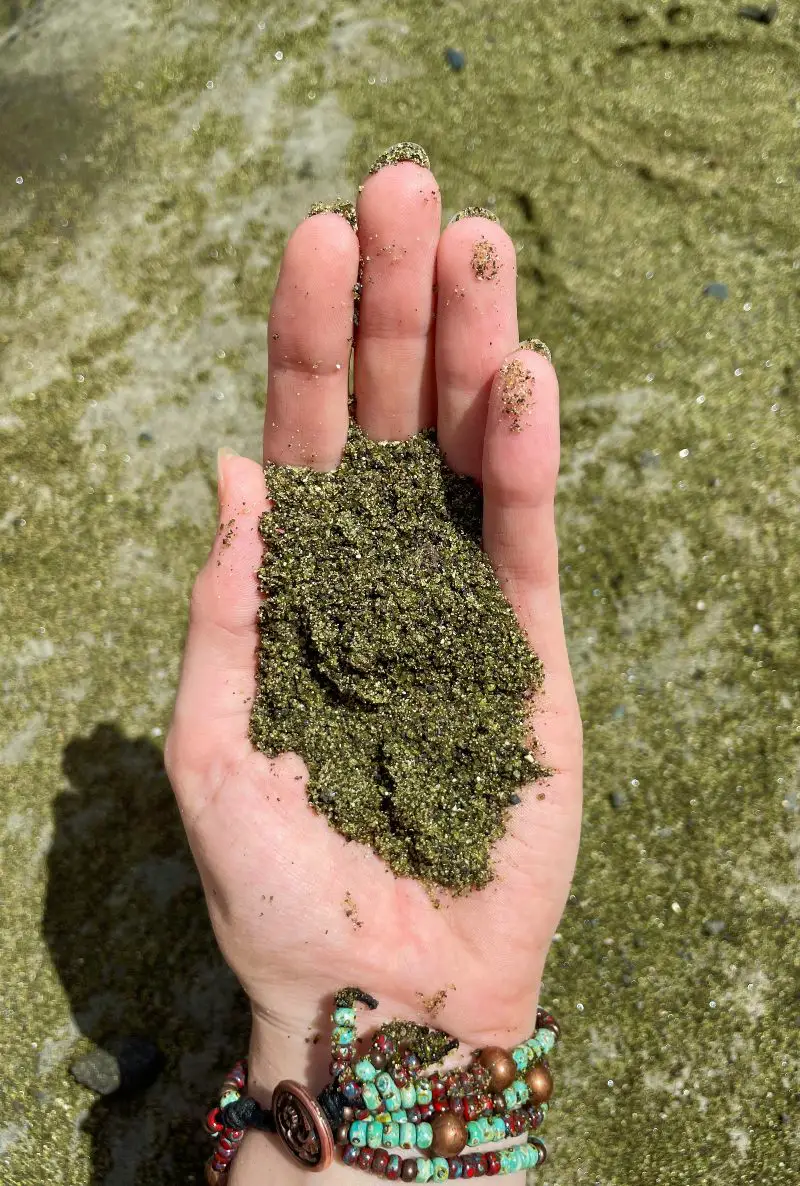
A Natural Wonder of Big Island, Hawaii
It had started sprinkling just as the beach came into view from above, which must have deepened the color of the sand. Once we safely scaled the cliffside, we sheltered under a ledge until the rain stopped, just taking in the otherworldly view. There were 20 or so other people scattered across the beach, which was maybe a quarter of a mile long.
I paused for a moment and considered the slow but steady processes at work in this bewitching place. When olivine – known as peridot when it’s gem-quality – is in contact with the air, it triggers a natural chemical reaction. The little crystals suck carbon dioxide right out of our atmosphere.
This happens even faster when olivine is in contact with water, such as here along the shore, though it’s still sluggish on human timescales. Teams of scientists are exploring ways to harness olivine’s carbon-capturing prowess to help combat climate change.
“So are we getting in the water?” Mitch asked, breaking my reverie. Miguel was content to play in the sand, but Mitch wanted to make good use of the snorkeling gear he had carried down. He quickly realized the waves were too big. They eased up nearer the shore, but Miguel was still wary of the water.
Miguel and I are big beachcombers, but there wasn’t much along the shore apart from the olivine sand. The beach was flanked by interesting areas to explore though, as the cliff cups the beach in a half circle. I later discovered we were standing in the heart of a long-dead volcano. Much of it had collapsed into the ocean long ago, and the waves continue to slowly erode more of it away.
Miguel and I made our way over to one side of the beach that was strewn with boulder-sized volcanic rocks coated with a dusting of olivine. After looking around and taking some pictures, we wandered over to the other edge of the beach.
There, the shore ends abruptly as the several-stories-tall cliff on this side is practically vertical. Thousands of years of waves have sculpted intricate patterns in the rock. We saw a few brave souls navigating the top of the cliff on this side, leaving me terrified they would fall into the shallow water. In these remote corners of the world, there are no guard rails.
I carried Miguel to Mitch and after letting the baby play in the sand a little while longer, we decided to head back. Though we’d hiked for over an hour and drove twice that long from our hotel to get here, we felt we’d had our fill of this unique beach after about 45 minutes.
But someday we’ll make the trek to Papakōlea again. Packing lighter, ensuring we’re in better shape for a fairly tough hike, and watching the weather will help us make even more of the journey next time. As it was, we left with a renewed sense of awe at the beauty and power at work on our planet.
